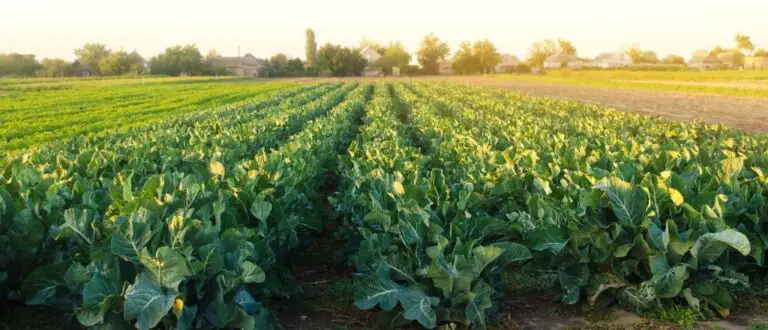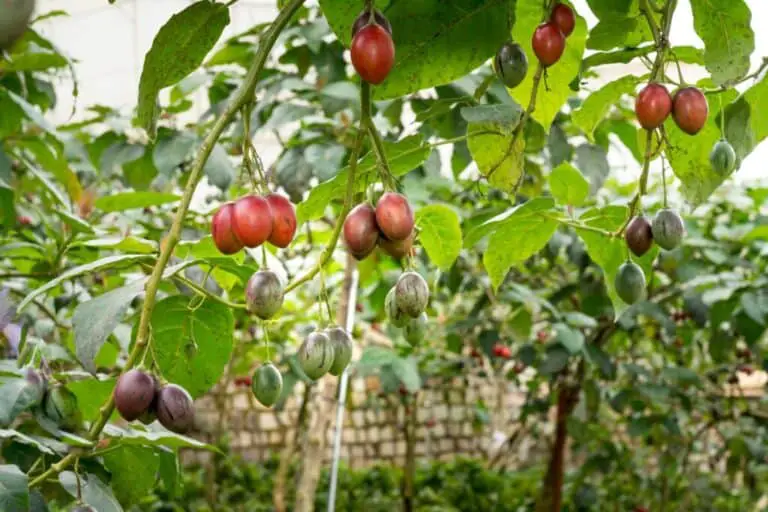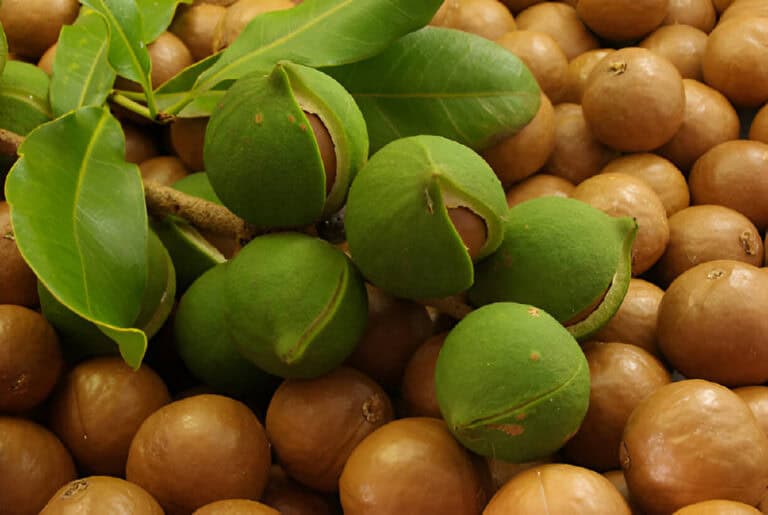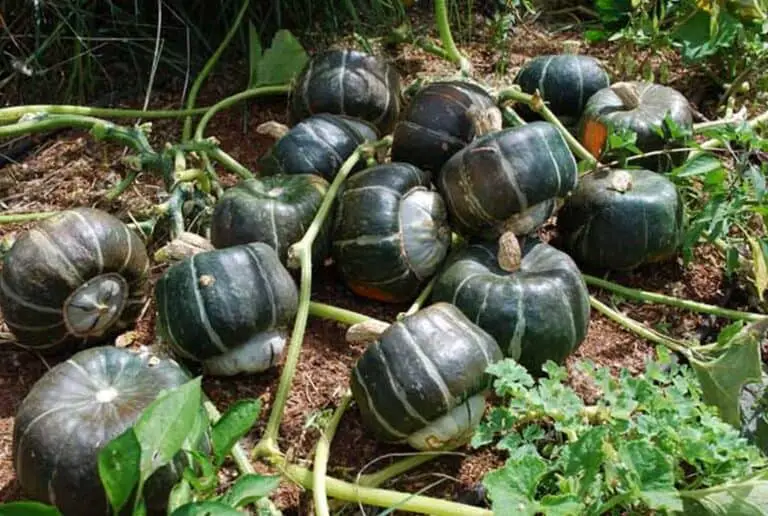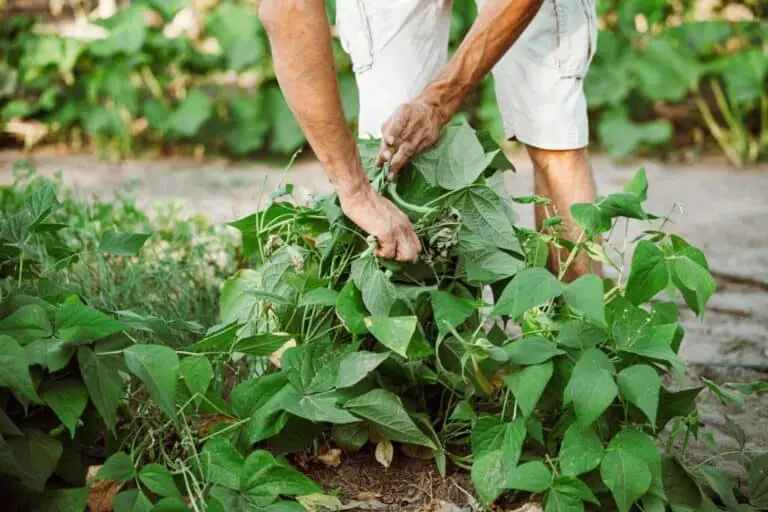How Long Does It Take for Bell Peppers to Grow & Produce Fruit?
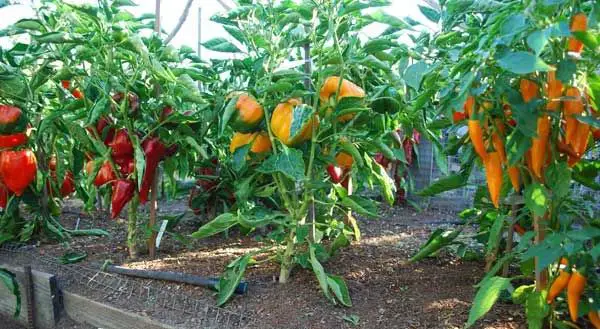
Bell peppers are a popular vegetable that can be grown in home gardens. They are a warm-weather crop and grow best in areas with long, hot summers.
Understanding how long it takes for bell peppers to grow is crucial when growing them. We must also understand the life stages of bell pepper plants in order to plan for maximum yield.
Have you ever wondered how long it takes for those vibrant, bell-shaped peppers to grow and produce fruit? While some vegetables may be quick to produce, bell peppers require a bit more patience and care.
From seed, it takes most bell peppers 120–150 days to grow. Most seed packets will list 60–90 days to maturity. This is because the normal way to grow bell peppers is to start them inside for 8 weeks.
In this article, we’ll learn more about bell peppers, including how long it takes for them to grow, where they grow best, and how to get a good harvest. So grab your gardening gloves and get ready to learn everything you need to know about growing bell peppers!
Are Bell Peppers Easy to Grow?
Are Bell Peppers Easy to Grow?
Bell peppers are not difficult to grow, but they are a warm-weather plant that requires a long season. Start bell peppers as indoor plants for 8–12 weeks to get a good-sized bell pepper plant that gives good yields come harvest time.
Bell peppers have what’s called “perfect” flowers, meaning they have both male and female parts in a single flower. They are also known as “self-fertile” because they can pollinate a single plant even if only one flower grows on it.
Although bell pepper plants are warm-weather plants, you don’t want them to get full-time exposure to sunlight. Too much heat during the flowering, pollination, and fruit production periods can create a problem.
If temperatures will rise above 90 degrees for more than a couple of days, consider getting bell pepper plants out of the midday sun. You can use a shade cloth, bedsheets, or whatever else you have around.
Do Pepper Plants Grow Back Every Year?
Bell pepper plants are tender perennials that can live for 5 or more years. Cold enough soil temperatures will kill off the root system of the plant, and it will not grow back. In warmer climates, without hard frosts, bell pepper plants will grow back every year.
In warmer climates, bell peppers will produce fruit. Then, when temperatures drop to the 40s and 50s, the plants will start to go dormant. They will most likely shed all of their leaves, but they will stay alive through the winter and start to grow new leaves in the spring.
In colder climates, it is possible to overwinter bell pepper plants indoors. This is possible with supplemental lighting or without it.
This pepper plant was overwintered indoors with supplemental lighting and grew into a big bushy plant.
If the bell pepper plant doesn’t get enough light from other sources, it needs to be cut back to about a third of its original size. If you’re pulling the pot from the soil to put it in a pot, cut back the root system by about 1/2 as well. You shouldn’t be concerned about the roots if the plant is already potted.
Depending on how much light you get inside, the bell pepper plant might have slow new growth or no growth at all until the next spring. It will not use much water or nutrients in this dormant state.
If you have supplemental lighting, you can bring the bell pepper plant indoors, and it will continue to grow like gangbusters.
By the end of one season, you can have a behemoth pepper plant. It will produce a serious bell pepper haul the following season.
Clone a Bell Pepper Plant
Cloning a bell pepper plant allows you to get a large number of plants, all of which are identical to the plant you took them from. This allows you to choose a plant that will grow quickly and produce a lot of fruit while also knowing what color and flavor to expect.
You can take cuttings from your bell pepper plant to make clones indoors. This can be an alternative to bringing a plant indoors to overwinter. You want to take clones from the plant about a month before bringing it inside.
The point of this is to take the cuttings while the plant is still active. The plant will naturally go into dormancy if you leave it outside as the weather cools.
Choose branch ends that are green and healthy. Take cuttings that are about 8 inches long. Use something sharp to cut with, so you get a clean cut and don’t mash the branch. Cut the stem at a 45-degree angle.
Remove leaves and buds from the 8-inch section, leaving only small leaves at the top of the cuttings. Place the cuttings in a cup with water while you take the rest of the cuttings. Because a 100% success rate is unlikely, take more cuttings than you want.
Here you can see some extremely healthy cuttings that are about 18 inches tall.
A hydroponic system like this is the best I’ve seen for consistently getting large, healthy clones. When you’re ready to transplant into a bigger pot with soil, the plants make the transition from hydroponics to soil without a problem.
You can easily make a system like this yourself with a plastic tote and a fish tank water pump. Just cut holes in the lid of the tote for the plant starters to fit in.
Another good option is a starter tray with a dome that has a vent to control humidity. Here are some plant starters and Clonex Rooting Gel. No matter how you take your clones, I recommend using the Clonex rooting gel.
After taking cuttings and placing them in your chosen medium, you should see signs of roots in 1-3 weeks. For more information about cloning, look up videos on marijuana clones. Because it’s a high-value crop, those guys really know their stuff.
How Long Does It Take Bell Peppers to Sprout?
Bell pepper seeds will sprout in 5–21 days, depending on the soil temperature. A warmer temperature will make the seeds germinate faster, and at a colder temperature, they will germinate slower. Bell pepper seeds germinate best at temperatures ranging from 80 to 90 degrees.
Most garden plant seeds germinate faster in warmer temperatures, and that’s the purpose of heating mats.
If you use a heating mat, remember to remove it once 50% or so of a tray has sprouted. Small seedling plants grow better in cooler temperatures, around 55 to 75 degrees.
Bell pepper seeds are typically planted indoors. They are warm-weather plants that need a long growing season. Starting bell peppers inside is the norm for a reason. You’ll get a bigger plant in the end that will produce more bell peppers.
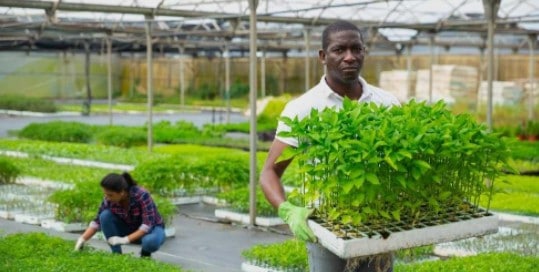
After bell pepper seeds sprout, move them to a south-facing window. Seedlings like lower temperatures than seeds do to germinate. Still, don’t put the sprouts right against the window.
Use cardboard covered in aluminum foil or any shiny white surface to put behind the seedlings to increase the amount of light they’re getting.
If you do decide to plant bell pepper seeds outside, wait until soil temperatures are at least 70 degrees. Use a soil thermometer to test the soil temperature. A soil thermometer is basically a meat thermometer that reads down to lower temperatures.
Combined with knowing the last frost date, it’s a great way to know when to plant different vegetable seeds outside. Wait until 9–11 AM to get an average soil temperature.
How Long From Flower to Fruit for Bell Peppers?
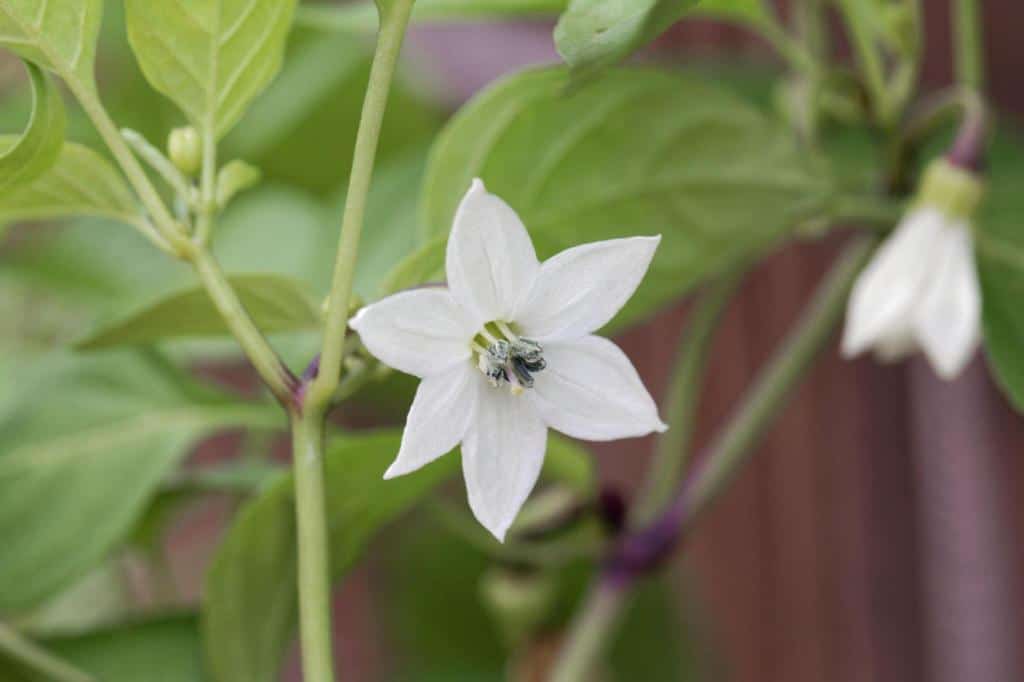
After flowers appear on the bell pepper plant, bell peppers will start to form from the flowers in around 14 days.
From when bell peppers start to form until they reach their full size, it will be around 35 days. Bell pepper fruits will have changed color and be fully ripened about 2 weeks after they reach full size.
Most bell pepper varieties will produce green peppers first. All green bell peppers in stores are the immature version of a variety that, if left on the vine, would have turned color and ripened.
Green bell peppers are cheaper than the different multicolored bell peppers like orange, yellow, and red bell peppers. This is because the grower doesn’t have to leave them on the vine longer. So they free up space sooner, use less water, fertilizer, and labor taking care of them, and have less chance of the peppers developing blemishes.
Green bell peppers are fine to eat at any stage, but because they are immature, they taste less sweet and are less nutritious than bell peppers that have fully ripened. Red bell peppers are the sweetest and healthiest variety.
Expected Size of Mature Bell Pepper Plants
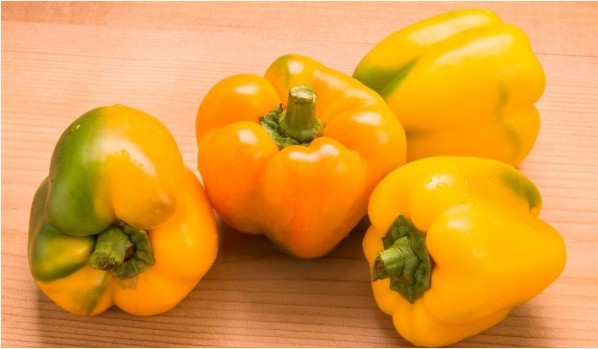
When considering the size of mature bell pepper plants, it’s important to keep in mind that these plants have a branching growth habit, which means they will produce a central stem and multiple lateral branches.
This branching pattern contributes to the plant’s overall size and shape. Additionally, the amount of room a bell pepper plant has to grow, the caliber of the soil, and the quantity of sunlight and water it receives will all affect how big it becomes.
In general, larger varieties of bell peppers tend to produce larger plants. For example, a fully grown California Wonder bell pepper plant can grow up to three feet tall and wide. Smaller varieties, like the Miniature Yellow Bell Pepper, may only reach about a foot in height.
On average, mature bell pepper plants can reach a height of 18 to 24 inches and a width of 18 to 24 inches as well. But the size of your plants will depend on a number of things, such as the type of bell pepper you grow, how it grows, and how well you care for it.
Some bell peppers, like mini or ornamental peppers, are smaller and more compact by nature, while others can grow much bigger. Things like the temperature, the caliber of the soil, and the amount of water available can also have an impact on the size of your plants.
How to Grow Bell Pepper Plants to Maximize Fruit Production
There are a few simple things gardeners can do to increase the number of bell peppers in their harvest. Choosing the right types and varieties of bell peppers that are known to produce more peppers is an obvious one.
In addition to that, below are some things that you might do to maximize the output.
1. Make the Most of the Growing Season
As long as the weather is favorable, the plants will continue to produce peppers. From the Fourth of July through Thanksgiving, we harvest bell peppers in Atlanta, Georgia. A simple way to increase production is to have pepper seedlings ready to be moved after the danger of frost has passed and to let them grow as late into the year as possible.
2. Sunlight Is a Critical Factor in the Growth of Bell Peppers
These plants need at least 6 hours of direct sunlight each day, so it’s essential to choose a location that receives ample sunshine. Sunlight provides energy for photosynthesis. It also keeps the plant warm and dry. This can prevent diseases and promote healthy growth.
If you’re growing bell peppers indoors, consider using grow lights to ensure they get the amount of light they need.
3. When the Plants Are Small, Pinch the Flower Buds
Pepper plants can grow too big for their starting containers before transplanting, causing them to bear fruit too early. Pinch off flower buds when the plant is in a starter cup or soon after it has been moved to help it grow more before it blooms.
4. Pick Peppers as Soon as They Are Fully Mature
Harvesting the peppers on a regular basis encourages the plant to produce more.
5. Soil Quality Is Important in Growing Bell Peppers Successfully
These plants thrive in well-draining soil that is rich in organic matter, such as compost or aged manure.
6. If You’re Fertilizing, Cut Back on the Nitrogen as the Plant Starts To Blossom
Nitrogen is generally needed to provide energy to the plant when it is growing. Nitrogen must be adjusted with potassium and phosphorus when in the fruiting phase.
7. Soil PH Is Also Crucial
With a range of 6.0 to 7.0 being ideal for most varieties of bell pepper. If your soil is too acidic, you can add lime to raise the pH level or sulfur to lower it. It’s also a good idea to test your soil before planting to determine its nutrient content and make any necessary adjustments.
8. Bring Your Favorite Plants Indoors for the Winter
Pepper plants that are taken indoors during the winter grow bushier the following year and bear fruit early.
9. Proper Watering Is Essential for the Growth of Bell Peppers
These plants need regular watering to prevent the soil from drying out, but they’re also susceptible to root rot if the soil is too moist. As a general rule, aim to keep the soil consistently moist but not waterlogged. Depending on the weather and other growing conditions, this may need to be watered once or twice a week. Be sure to water deeply so that the roots have access to water at lower levels of the soil.
Final Thought
Bell peppers are a type of vegetable that grows on a vine or in a garden. The bell peppers grow outdoors in warm climates, or they can be grown inside in a greenhouse. They need lots of water and fertilizer, so make sure to give them both when planting. To grow bell peppers from seed, start them indoors four to six weeks before the weather is warm enough for them to be transplanted outdoors.
Bell peppers take about 60 to 80 days to grow from seed to maturity. Once the bell pepper has reached its mature size, it will be ready to be picked.
FAQs
How long does it take for bell peppers to grow from seeds to harvest?
The complete bell pepper growth cycle typically ranges from 70 to 90 days. However, factors like variety and environmental conditions can influence the duration.
When should I start harvesting bell peppers?
Bell peppers are ready for harvest when they reach their mature color (usually green, yellow, orange, or red) and have a firm texture. Harvesting promotes further fruiting.
Are there ways to speed up the bell pepper growth process?
You can’t drastically speed up growth. However, providing ideal conditions, like warmth and sunlight, can optimize the growth rate of bell pepper plants.
Can bell peppers be grown indoors, and how does it affect the growing time?
Yes, bell peppers can be grown indoors. However, the growth time may extend slightly due to factors such as limited sunlight and space constraints.
How long do bell pepper plants continue to produce fruit after the first harvest?
Bell pepper plants can produce fruit for several months with proper care. Regular harvesting encourages continuous production.
How does the growing time of bell peppers vary between different varieties?
Bell pepper varieties exhibit variations in growth duration. It can range from 60 to 100 days, depending on the specific type and environmental conditions.


